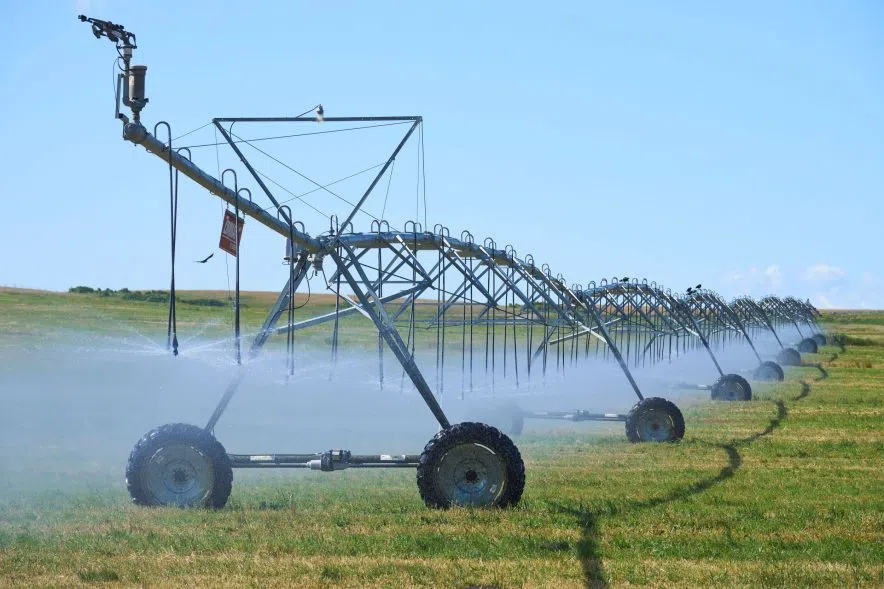Frustration is beginning to mount for members of the Saskatchewan Association of Rural Municipalities (SARM) over a long-awaited irrigation project at Lake Diefenbaker.
Nearly four years after it was announced, SARM is asking for an update on the $4-billion project.
SARM president Ray Orb told 980 CJME the project is really important to the association’s members.
“We have many municipalities around Lake Diefenbaker that are really served by Lake Diefenbaker in many more ways, but one of the ways that we think they can be better served is if the first phase of the expansion project would go ahead,” he said.
“We’ve been waiting now for a number of years after the announcement was made but we haven’t seen much progress on that file.”
The project was to irrigate up to 500,000 acres of land. The province said the first stage required a $22.5-million investment.
Phase 1 of the project is to include the rehabilitation and expansion of the existing Westside irrigation canal system. That’s expected to increase the amount of irrigable land in the area by 80,000 acres.
Phase 2 is to involve further expansion and buildout of the Westside Irrigation Project, a move that will add another 260,000 acres of irrigable land.
The third phase is to feature the buildout of the Qu’Appelle South Irrigation Project, which would add about 120,000 more acres of irrigable land.
Orb said the project has the potential to provide water for livestock as well as farmers and ranchers, and can help with the production of food.
“That is something I think that’s even more important now than ever is food security not only in our province, but our country,” Orb said.
“So we need to try to get attention from both levels of government — both the province and the federal government — and we’d like this expansion to move ahead.”
Orb said the federal government is stalling the process.
In a news release sent Wednesday, SARM called for an update on Phase 1 in Division 5, which was deemed “one of the most shovel-ready” projects in the province as 90 per cent of the current canal was already in place in 2023.
Patrick Boyle with the Water Security Agency said it and the provincial government have made several attempts to secure funding from the federal government since the project first started.
He said the WSA has twice applied to the federal government’s Disaster Mitigation Adaptation Fund. Its first application was denied and the agency is currently awaiting a response for the second.
“The feedback we received so far from the federal government is that the project had everything in the criteria and was exactly what would be fitting of that, but the project was still not successful in receiving funding,” Boyle said.
Boyle also said several letters have been sent to federal ministers asking for grant funding but each time, they’ve been referred to the Canada Infrastructure Bank, which is a federal Crown loaning entity.
“We believe that a grant is needed and (that a loan shouldn’t) be provided given that the benefits of the project would be accrued to the federal government as well as the province when the project proceeds,” Boyle said.
Boyle referenced the federal government’s investment in Alberta’s infrastructure as a model for what the federal government could do for Saskatchewan.
Boyle said the WSA also went to Ottawa to appear before the House of Commons’ standing committee on the environment. The WSA appeared as a witness to talk about the projection and present its benefits.
“We presented the benefits of that and tried to engage them but we’ve yet to be engaged by a federal agency to discuss grant funding anymore,” Boyle said.
Orb said SARM has been pushing to jumpstart the project because of the dry years the province has gone through.
When asked about potential risks from the delay, Orb said the project could become more expensive, especially with the inflationary pressures that are felt right now.
“The projects are getting so expensive that we’re concerned that this project will never be completed and that’s why we believe it should move ahead now,” Orb said.
Construction was initially expected to take place over 10 years.
980 CJME reached out to Agriculture and Agri-Food Canada for comment, but didn’t hear back by the time of publication.







